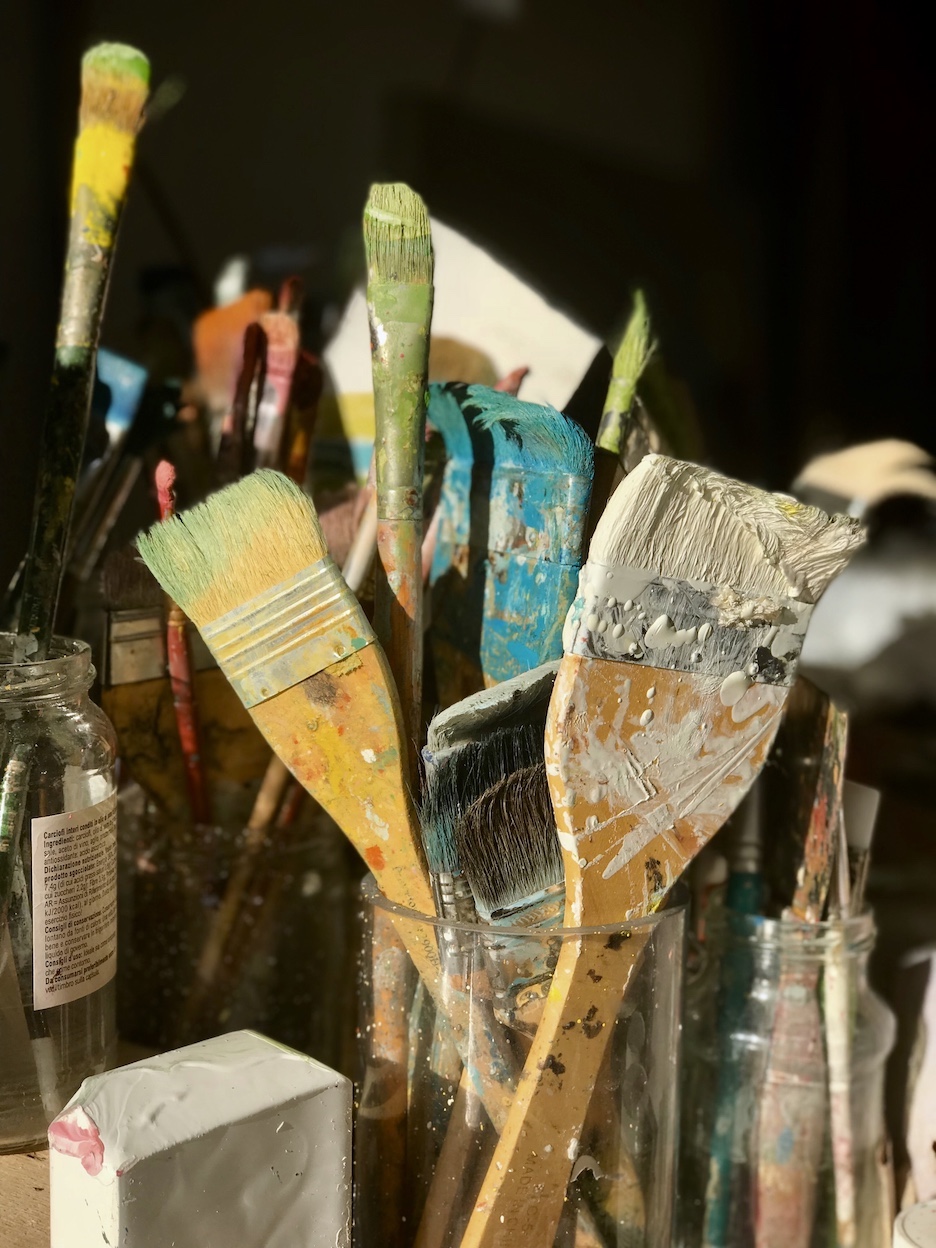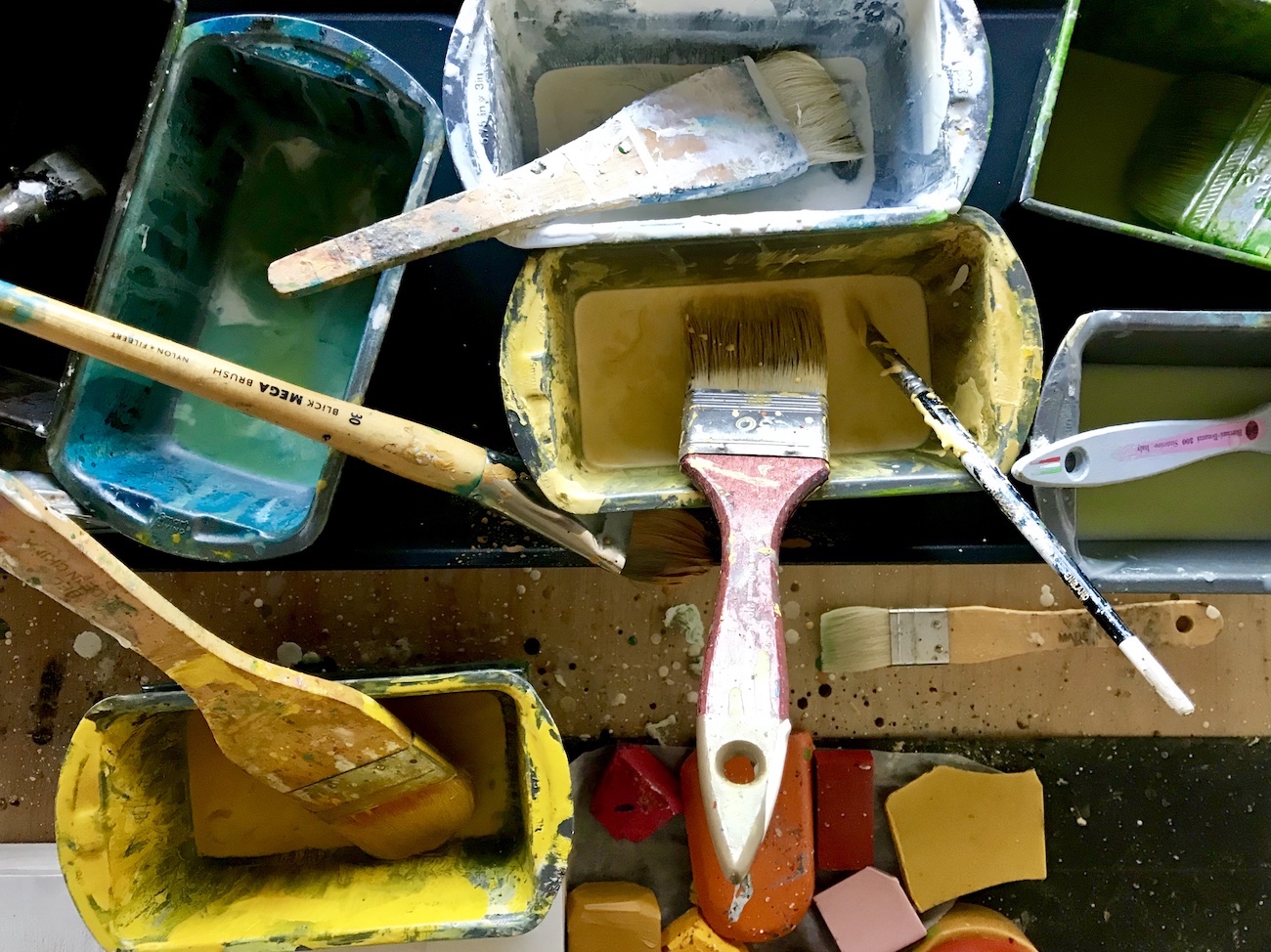Encaustic 101
(Probably should have done this a while ago….)
How about I tell you how I create encaustic paintings?
The cover shot shows a picture of my paint. These blocks contain beeswax, damar resin and pigment. I melt them on a hotplate – I actually use a pancake griddle – either in tins (if I need a lot of a particular color) or directly on the griddle, which I use like a palette to lay down and mix colors.
Then I begin painting on a wood panel. With encaustics, you need to paint on a porous surface to allow the wax to bond to the substrate, so most people use wood. For the bonding to occur, you need to fuse each layer of wax you add to your painting. This can be done with a heat gun or a torch. I used to use the former, and now prefer a butane torch … although I am a bit clumsy and a lot messy, so I have to take extra care that I don’t set myself or the studio ablaze.
Encaustic allows you to build up as much texture as you want, but the more layers you add the trickier it gets to not create a disaster by accidentally melting color fields together – kind of like making an oil painting muddy. In general, it is difficult to get exactly what you want because (1) the wax dries on contact with the surface so it is no longer fluid/moveable and (2) fusing each layer with a torch can result in unintended consequences.
BUT, you can always scrape away what you don’t want and try again. So razor blades are an indispensable tool.
You can also embed things into the wax like collage elements, found objects, fabric … just about anything. I’ve used vintage wallpaper, copper wire, birch bark, shattered windshield glass and moss to name a few. And because beeswax is a natural preservative it will not only protect these foreign elements, but also result in an archival painting. In fact, there are paintings dating back to the Hellenistic period of the first century BCE that used encaustic. I’ve read these Fayum mummy portraits are the oldest portraits to have survived in the world. Look for one the next time you are in a major metropolitan museum ;)


